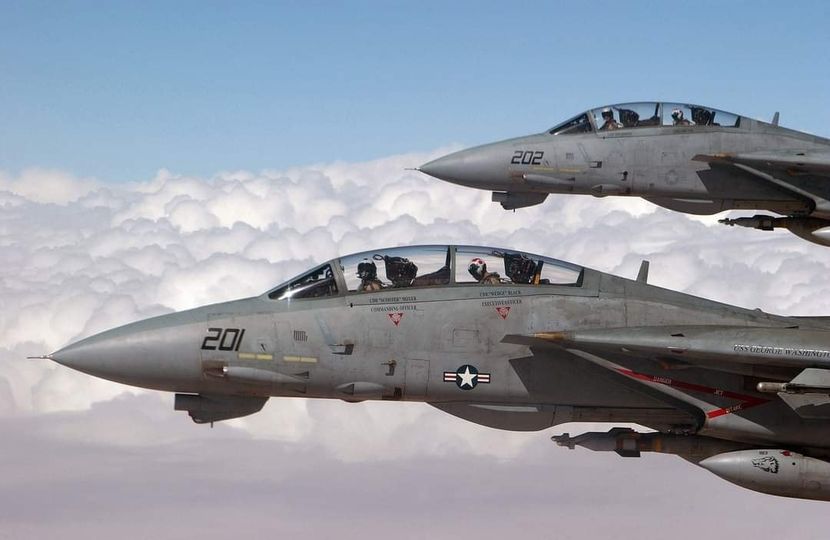The F-14 saw much more combat than usually thought: indeed, much more than the other ‘teen fighters’ – including F-15, F-16, and F/A-18 – combined.
Yesterday was the 50th anniversary of the first flight of the Grumman F-14 Tomcat: something like that type’s 50th birthday.
The F-14 was always highly controversial: partially developed for a task it never performed in real life, complex, expensive, and providing capabilities de-facto undreamt of at earlier times. It was the last of what I call ‘muscle plane’: even if the first aircraft ever to have microchips installed, it had no such accessories like fly-by-wire, and was terribly troubled by its original engines (and few other vices). On the contrary, its weapons system was easily outmatching everything that was in service from the 1970s well into the 1990s. Some crews loved it (and still love the Tomcat), others not, and it’s certain that ground crews servicing the type have had (and still have) their own feelings about the type: regardless if positivelly or negativelly, it’s unlikely the Tomcat has ever left anybody unimpressed.

The F-14 also saw much more combat than usually thought: indeed, much more than the other ‘teen fighters’ – including F-15, F-16, and F/A-18 – combined. Alone during the 1980s, it saw eight years of intensive combat operations during the Iran-Iraq War, where it scored its first kill ever (a gun kill against an Iraqi Mi-25 attack helicopter), and then in service with the US Navy off Iran (Iran hostage crisis), Libya (two air combats and dozens of ‘close calls’), Lebanon and Syria (reconnaissance ‘only’), Somalia (reconnaissance) etc. Finally, in 1991 it took part in the last conflict in which it served in its original role, as a ‘pure’ interceptor, during the II Persian Gulf War. Subsequently, it was deployed during the Iran-Azerbaijan stand-offs in the 1990s, and then – and also as a strike aircraft – by the US Navy in Bosnia (1992-1995), over Kosovo (1999), in Afghanistan (2001-2006), and in Iraq (2003-2006).
Exactly how many aerial victories diverse F-14-crews have scored over the time remains unknown – simply because the work on cross-checking all the related Iranian claims is still going on. Certainly enough, more than 160 claims are known by Islamic Republic of Iran Air Force (IRIAF) crews alone, plus nearly half a dozen by crews of the US Navy: however, this should not mean that all the claims by crews of both services are known or have been fully cross-examined…just like not all the F-14-losses have been restlessly researched and their reasons definitely determined.
(I wouldn’t be surprised if, once all the related work is complete, sometimes in the future, it turns out the total is higher than the total of confirmed kills by F-15 and F-16, combined.)
Sadly, the US Navy withdrew its Tomcats from service back in 2006. The IRIAF still has about 60, and is keeping some 40 of these in active service – in turn proving there’s still much life left in Grumman’s last cat.

